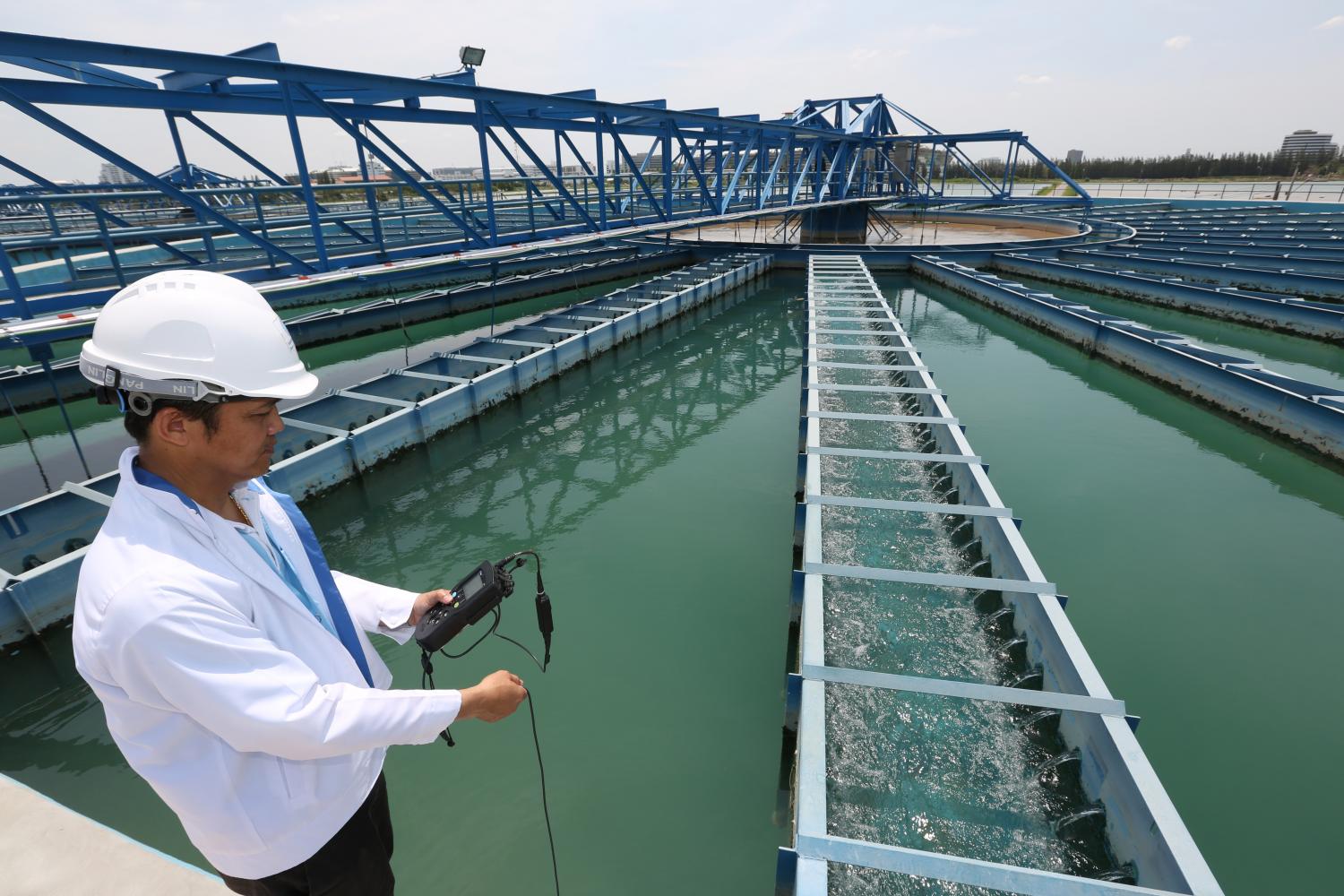
The looming water crisis in Bangkok -- driven by prolonged drought and worsening salinity in the Chao Phraya River -- has raised questions of what should be done. Research from the Institute of Water Policy at the Lee Kuan Yew School of Public Policy in Singapore points to two broad approaches -- supply side and demand side solutions -- and a dozen practical measures.
On the demand side are many short term and doable solutions. The government's call for shorter showers is one. Thailand can learn from the successful public campaign in Cape Town, South Africa to get their citizens to conserve water in the face of the city running out of water. Bangkok welcomes millions of tourists, 35 million last year. Hotels and tourist accommodations should be required to join the campaign. One way to do this is to require hotels to install self-regulating showers that turns off after say five minutes of use. There are now smart showers that provide meters to tell users about their consumption. This experiment is now being done in Singapore.
Bangkok has many high-rise buildings. One way to regulate water consumption in these building is to reduce or regulate water pressure. Bangkok's hundreds of shopping malls should be required to recycle water, use smaller flush cisterns and self-regulating taps. The government should also consider raising water tariffs to a point that people will conserve water while guaranteeing lower income households of a minimum level of consumption. The right time to increase water tariffs is during periods of crisis as consumers would understand and even support the measure.
Bangkok has 9 million registered cars. Car washing should be regulated if not banned. Industries are major consumers of water but because the cost of water is a fraction of their total cost, they are not highly motivated to conserve water. Industry water benchmarking could be introduced as one measure to raise awareness among managers. Government should promote the use of water conserving washing machines.
Institutional water users -- schools, hospitals, governments buildings, military camps -- are also major water users. They have little incentive to conserve because their managers do not pay the price of water from their pockets. They should be given hard targets to reduce their water consumption and the results made public. In the medium term, the government should embark on an ambitious target to reduce water leaks and losses, currently at 25% in Bangkok. It Manila, it is about 11% and in Singapore 4%.
Supply side solutions on the other hand are expensive and long term but often necessary. Desalination and cleaning of waste water are expensive, consuming more than 10 times the energy cost of conventional water sources. Developing ground water sources is another solution, as the government is now trying to do. However, this has limitations. Bangkok is already sinking and ground water extraction will hasten this if not done prudently, worsening the problem of saline intrusion. Water rationing is another possibility in worst-case scenarios. However, people should be warned in advance so as not to cause panic. Panic could lead to a surge in demand and sudden drop in water pressure making it difficult for the water utilities to supply, as happened to Metro Manila in the summer of 2019. Rain water harvesting should be encouraged among households and buildings.
There are also more radical, long term and expensive solutions in worst-case scenarios that the government might want to consider.
These options include controlling saline intrusion into Chao Praya River by installing a barrage at the mouth of the river, similar to the Marina Barrage of Singapore; this makes sense since rising sea levels and prolonged droughts would mean more saline intrusion, destroying water sources and rice crops as is now happening in the Mekong River Delta in Vietnam.
Shifting from water intensive rice farming to less water intensive crops is also a long-term solution. This would affect the domestic and global supply of rice, pushing up inflation. Convincing farmers won't be easy as the experience of Vietnam has shown but government has to try innovative approaches.
Another option is studying the feasibility of building levees and reclaiming land in the Gulf of Thailand to raise the land above rising sea levels. A similar idea has already been announced in Singapore. The reclaimed land will increase its value over time and the land revenues can be used to pay for reclamation and construction costs. The Thai government has also decided on the feasibility and desirability of moving the capital outside of Bangkok, following the example of Jakarta.
These are no doubt radical and very expensive solutions but the cost of doing nothing is probably much more if Bangkok goes under water or without drinking water.
Dealing with the water crisis needs a master plan for water and climate adaptation. This requires building human resource capacity in water resources management, policy and governance.
One area that Thai universities can build on is to develop and teach courses on resilience economics in their engineering, economics and business faculties. Resilience economics equips policy makers with the tools to systematically weigh the costs and benefits of climate adaptation measures.
Eduardo Araral is director of the Institute of Water Policy at the Lee Kuan Yew School of Public Policy, National University of Singapore.